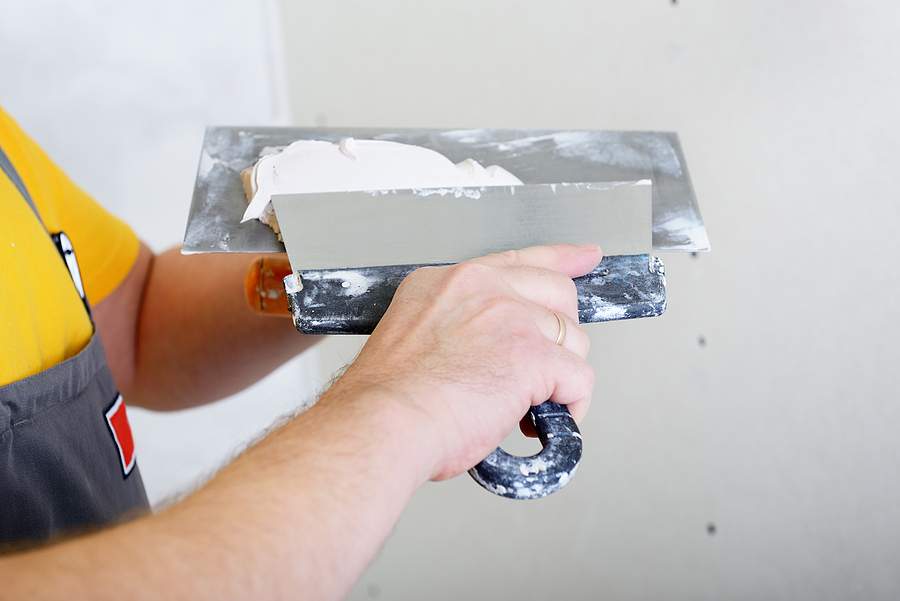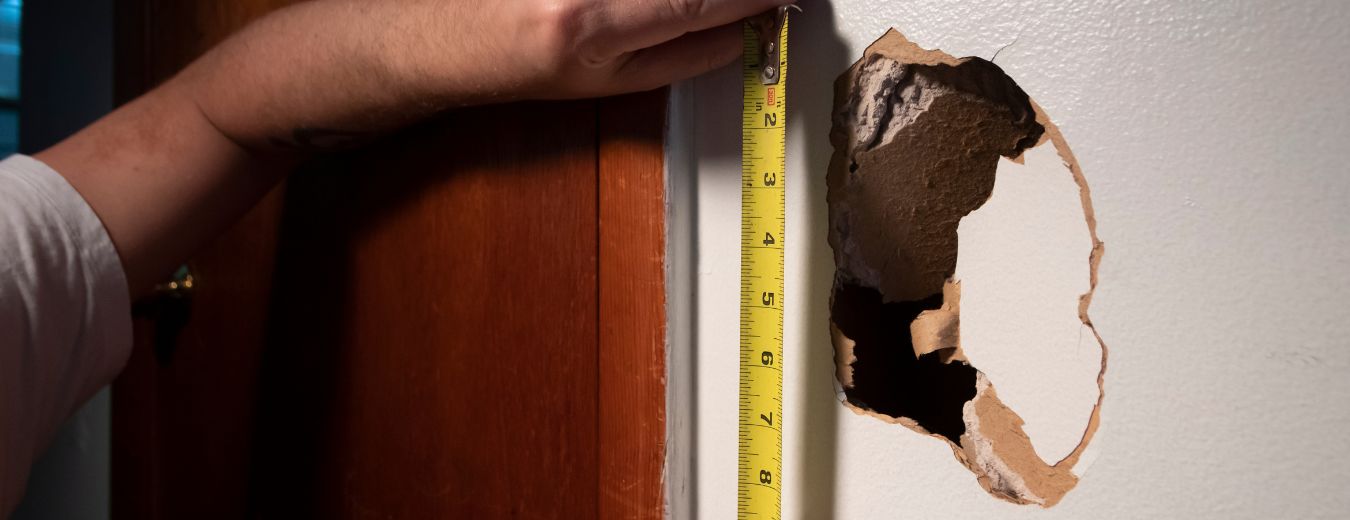A Comprehensive Guide to Learning Drywall Repair Work and Setup
This overview offers a thorough expedition of drywall repair work and setup, dealing with both newbies and seasoned specialists. It describes important devices, techniques for patching and hanging sheets, and the important ending up processes. drywall contractors. By understanding common mistakes, people can achieve refined outcomes. Mastering these skills not just improves one's home but likewise develops confidence in do it yourself endeavors. What foundational pointers will guarantee a successful task throughout?
Essential Tools for Drywall Fixing and Installment
When starting on drywall repair service and installment, a few crucial devices can considerably boost the performance and high quality of the work. A drywall blade, usually readily available in numerous dimensions, is crucial for using joint substance and smoothing joints. A taping blade is additionally needed for feathering sides and ensuring a seamless finish. Additionally, a drywall saw or utility knife enables precise cutting of drywall sheets to fit any area.
/Bhg-how-to-patch-dry-wall-hero-2431_ErCJ7v2pKcVADoq5rBc19m-9bc6054b40c84af4bd3ba2b19b3693b9.jpg)
Step-by-Step Overview to Patching Holes
Covering openings in drywall is an uncomplicated process that can recover the wall surface's look and stability. To begin, the area around the opening should be cleaned and any loose particles removed. For small holes, a basic spackle or joint compound can be applied with a putty blade. Larger holes may require a spot; a piece of drywall can be cut to fit the hole, protected with glue or screws, and after that taped around the edges. As soon as the spot is in place, joint compound is applied over the patch and feathery bent on blend with the surrounding wall. After the substance dries out, sanding is needed to accomplish a smooth coating. Finally, the repaired area can be keyed and painted to match the remainder of the wall. This method ensures a smooth repair work, improving the total appearance of the drywall and maintaining its architectural integrity.
Techniques for Hanging Drywall Sheets
After effectively repairing openings in drywall, the following step entails hanging brand-new drywall sheets to create a smooth surface. To accomplish this, one need to start by gauging the wall surface space properly and cutting the drywall sheets to fit. It is crucial to hang the sheets horizontally for much better structural honesty, beginning with the top and functioning downwards.
Using a drywall lift can streamline the process, particularly for ceiling installments. When placed, protecting the sheets with drywall screws at periods of about 12 inches along the sides and 16 inches in the area is important. This ensures a strong hold and reduces the risk of drooping. For edges, the sheets should be cut to fit well, allowing for cleaner joints. It is a good idea to startle the joints between sheets to strengthen the total structure, producing an extra durable surface ready for the following stage in the drywall installment process.
Ending Up Touches: Taping and Mudding
Finishing the drywall setup involves the crucial steps of mudding and taping, which ensure a smooth and polished coating. Taping calls for the application of joint tape over the seams in between drywall sheets. Drywall Installation Ogden Utah. This tape can be either paper or fiberglass mesh, with each type offering one-of-a-kind benefits. After taping, the following step is mudding, where joint compound, or "mud," is put on cover the tape and fill up any kind of blemishes
Using a drywall knife, the compound ought to be spread equally, ensuring a feathered edge to reduce visible changes. Multiple layers are commonly necessary, with fining sand in between each layer to achieve a seamless surface. Mindful interest throughout this procedure is important, as it significantly affects the final appearance of the wall. With the right technique and patience, completion outcome will certainly be a perfect foundation prepared for paint or ending up touches.
Usual Mistakes to Stay Clear Of in Drywall Projects

An additional common blunder is not enabling sufficient drying time in between coats, which can catch dampness and compromise the finish. In addition, disregarding to feather the sides properly can this article create visible lines and imperfections. Avoiding sanding or utilizing improper techniques may leave harsh places. By being aware of these mistakes, people can significantly improve the top quality of their drywall tasks and achieve a professional-looking finish.
Often Asked Concerns
Can I Repair Drywall Without Professional Help?
Yes, one can fix drywall without professional aid. With the right devices, materials, and advice, individuals can efficiently take care of small repair services. However, substantial damage might need professional knowledge for ideal outcomes and sturdiness.
The Length Of Time Does Drywall Compound Take to Dry?
Drywall substance usually takes in between 24 to 48 hours to completely dry entirely, depending upon variables such as humidity and temperature. Thinner layers might dry much faster, while thicker applications need more time for suitable outcomes.
What's the most effective Kind Of Paint for Drywall?
The finest sort of paint for drywall is generally a water-based latex paint. It gives exceptional insurance coverage, durability, and simplicity of application, making it suitable for interior wall surfaces while enabling easy cleaning with soap and water.

Just how Do I Prevent Mold And Mildew on Drywall?
To avoid mold and mildew on drywall, warranty correct air flow, control moisture levels, make use of mold-resistant products, and without delay Continued resolve any kind of leakages. Routine assessments and immediate removal of water damage are additionally crucial for lasting prevention.
Is Drywall Recyclable After Removal?
Drywall is recyclable after elimination, supplied it is without impurities like mold and mildew, paint, or other hazardous materials. Reusing facilities can process it into brand-new products, promoting sustainability and decreasing land fill waste in construction.
When starting on drywall repair work and installment, a few important devices can substantially enhance the efficiency and top quality of the job. After effectively fixing openings in drywall, the next action includes hanging new drywall sheets to develop a seamless surface area. Completing the drywall installment includes the vital actions of taping and mudding, which ensure a smooth and polished surface. Achieving a sleek important source finish in drywall tasks can be challenging, and numerous common errors can undermine the quality of the work. Yes, one can fix drywall without expert assistance.